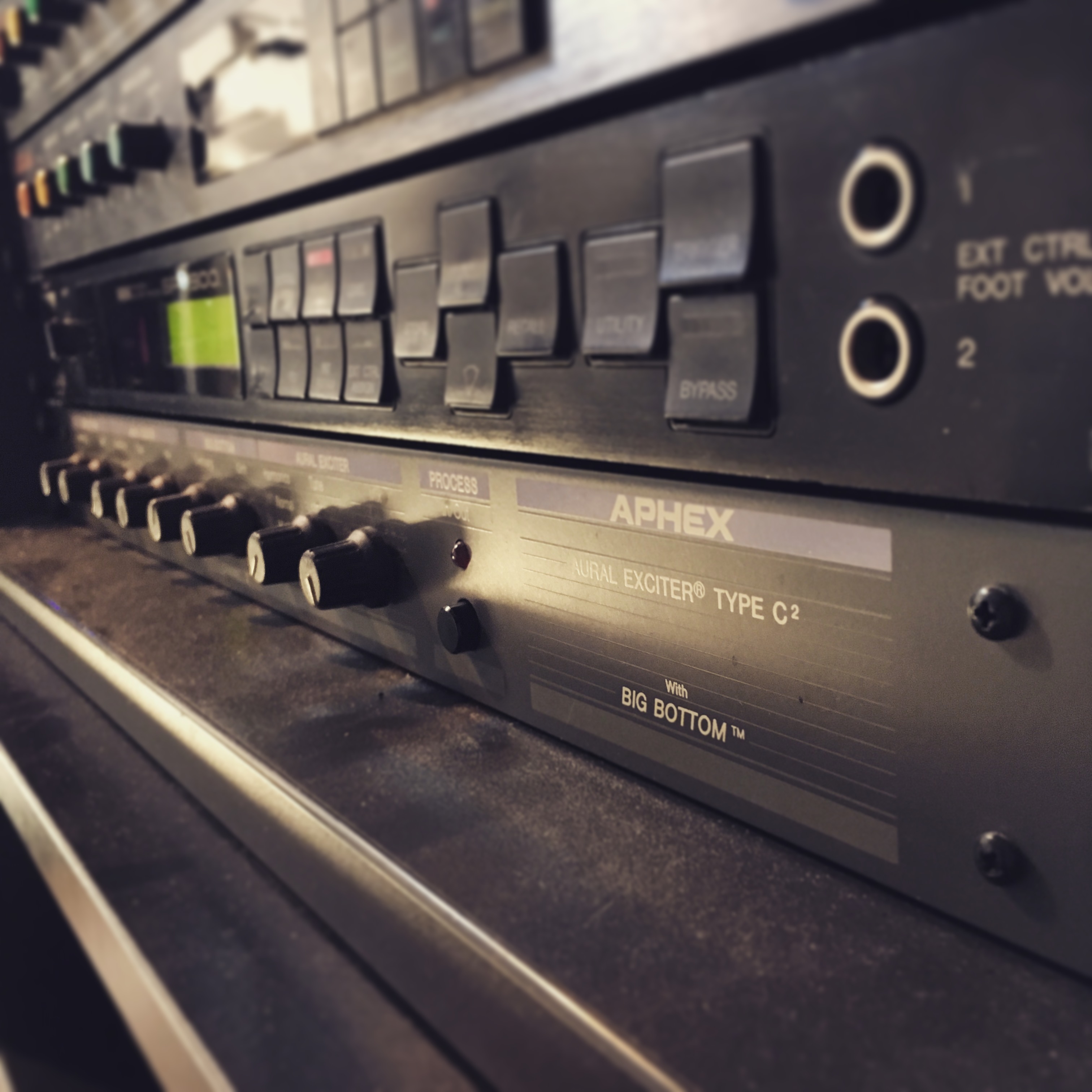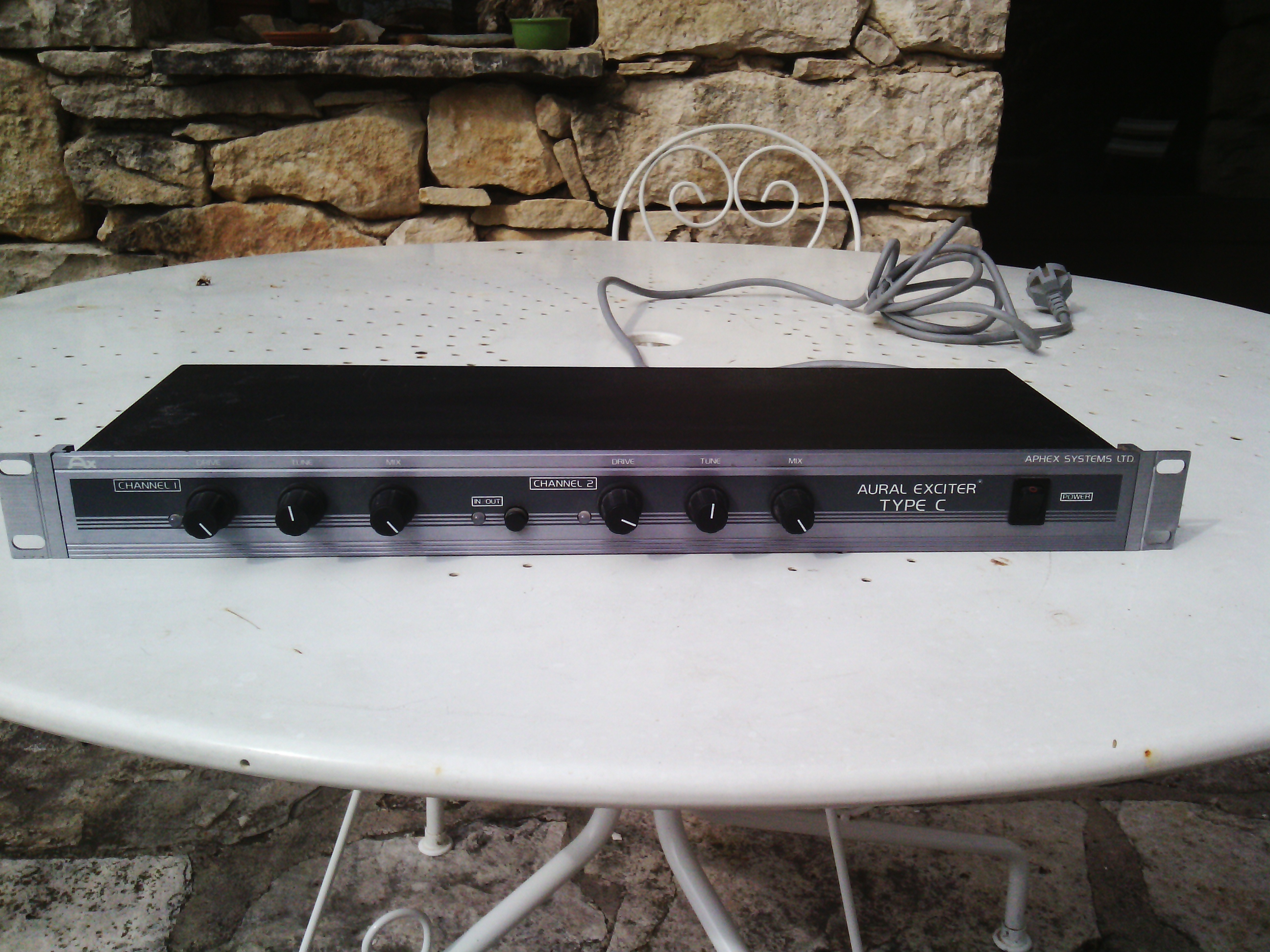

The controls of the unit are very simple to understand and operate. It is designed to operate at line levels and, therefore, there is no input suitable for microphone level. The instructions supplied with the unit give a comprehensive guide to various ways of patching the device. This means that there should be no difficulty interfacing the Aphex with other equipment. (More of this later.) Both input channels are of high impedance (47k Ohms) and the outputs are of low impedance (150 Ohms). There is also a switch for adjusting the operating level of the unit to match equipment being run at +4 dBV or -10 dBV, the operating level which is appropriate to most home recording equipment. At the rear of the unit are ¼" jack sockets for input and output signals of both left and right sides. It comes in its 19" rack-mounted form and is 1U high. The unit supplied for review, is a 2-channel stereo device which, of course, can be used as two monos. The generated harmonics are then added in with the original signal, and the mix varied by the Mix control. The level of this signal is then metered by a multi-coloured LED before it goes to the harmonic generator. See Figure 1.īefore the signal in the side-chain reaches the harmonic generator, it goes through a tuneable high-pass filter which removes any unwanted low frequency information. All the processing is done in an outside loop (called a side-chain) and this processed signal is added in very small amounts to the main signal. The main signal going into the Aphex Aural Exciter passes through unchanged. This manifests itself in a perceived increase in clarity or treble boost without giving any measurable increase in level. The harmonic structure of each sound or instrument, therefore, is strengthened, allowing it to stand out from others. The Aphex Aural Exciter replaces these masked sounds.īecause the harmonics generated are derived from the main signal, they are musically related. Other conventional types of processors such as equalisers or reverberation, enhance those parts of the signal that are left when these cues are masked by the recording process.

It is claimed that it is these missing cues that the Aphex Aural Exciter re-creates and adds back to the main signal to change the way in which we perceive what we hear. It is thought by the psycho-acoustic researchers that these harmonics are the minute cues which our subconscious minds interpret as 'presence' or 'realness'. The Aphex works on the principle of generating, within its circuits, fourth and fifth harmonics of the input signal which are mixed in with the input signal at the output. In the past few years there have been one or two similar devices on the market at a cost much less than the original, but now Aphex Systems Limited have introduced their Type B low-cost version of the original Exciter. A black sealed box with some knobs on was delivered to the studio and there was no way for inquisitive engineers to prise it open and peer at its insides. In those days, it was not possible to buy such a unit but the device had to be rented according to the amount of time it was used on each track. Most engineers and producers found that the device gave increased presence, clarity, and a greater perception of 'loudness' without increasing level. In 1975 the Aphex Aural Exciter was unleashed upon an unsuspecting studio, broadcast and film industry.


 0 kommentar(er)
0 kommentar(er)
